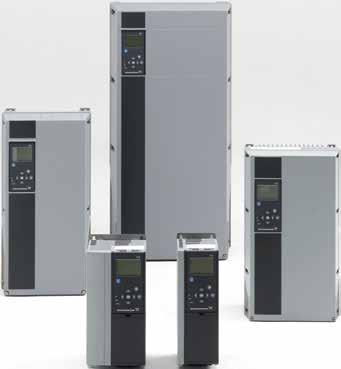
2 minute read
Simple solutions to complex energy challenges
CUE. MAGNA3 circulator.
VLSE vertical inline pump.
Imagine if you drove a car with one foot flooring the gas pedal while the other foot stepped on the breaks to regulate your speed. It makes no sense to overwork the motor or waste so much energy – and yet this is exactly how most of the world’s pumps are controlled.
Conventional pumps run at a constant speed and then use throttling valves or bypass lines to control performance. This method is simple and it works, but it is incredibly inefficient and leads to increased operating and maintenance costs. Traditionally, engineers and installers design and size building systems for peak load conditions, or the coldest days of the year, which occur between one and five per cent of the system’s annual operating hours. This means pumps and motors use more energy than necessary for 95 to 99 per cent of the time. Installers using conventional pumps also tend to oversize the system design to allow for underestimated and unexpected loads in the future.
The alternative
Grundfos has solved this problem by offering integrated variable speed pumps (VSP), which optimize pump performance by analyzing current head and flow, and adjusting speed accordingly. These pumps also feature permanently charged, electronically commutated motors (ECMs) that can reduce energy use even further and optimize comfort.
Grundfos offers a wide range of VSPs, including our MAGNA3 circulator and PACO VSMSE and VLSE vertical inline pumps. The VSMSE and VLSE feature ECM motors, that when combined with a CUE frequency converter, deliver significant energy savings and unmatched pump control. The fully integrated MAGNA3 with patented AUTOADAPT capabilities automatically adjusts operation speed to meet system demands – reducing energy consumption.
Although such pumps require a larger investment during the purchase phase, it is important to remember that the difference will quickly be recovered thanks to a number of important benefits.
Energy savings * High-efficiency, variable speed pumps can reduce energy consumption by more than 85 per cent by matching system performance to the actual load throughout the entire year by only running when necessary at the speed needed.
Cost savings * Because power consumption represents 85 per cent of a pump’s lifetime costs, even the smallest improvement in energy efficiency can translate into sizeable savings over the average pump lifespan of 15 years.
Optimized water flow through radiators * Oversized pumps not only use more energy than necessary by running longer and faster than needed – they also reduce heat-transfer performance.
Decreased lifecycle costs * Preventing a pump from unnecessarily operating at full speed extends the product lifecycle. VSPs also ramp up frequency and voltage gradually, reducing wear and tear on the motor.
Reduced pump noise * When few valves are open in a conventional hydronic heating system, the system pressure rises and increases pump noise. VSPs regulate pressure more effectively and are thus much quieter.
Thanks to these benefits, the payback for a VSP can range between eight months and three years.
For more information on Grundfos products, please visit www.grundfos.ca. p










